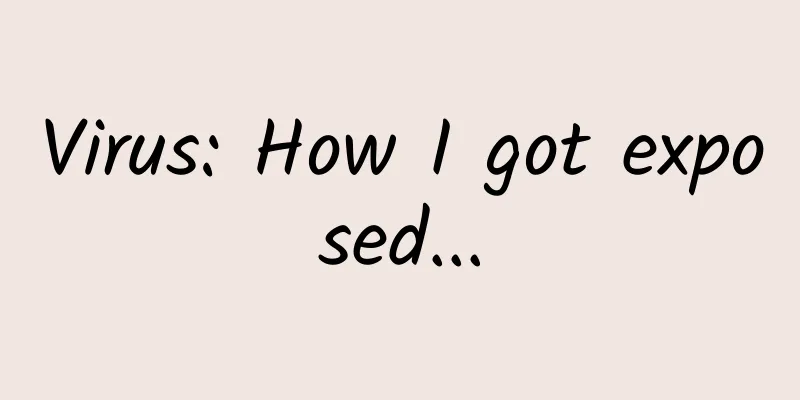What to do with your child's poop? It's too much trouble to throw it away, so why not eat it?

|
When the older generation talks about how difficult it is to take care of children, they will often say, " I raised you with a lot of shit and a lot of piss ." The work related to the cycle of life is indeed very hard. In the animal world, dealing with children's poop is also not a pleasant job. Moreover, the way animals deal with children's excrement is probably... eating it . I ate all the kid's shit. There are two ways for bird parents to deal with their baby bird’s poop: throw it away or eat it. And it’s a lot of work for the parents to deal with: a nest of six chicks in a Tachycineta bicolor nest can produce three balls of poop per hour . To keep the nest clean and prevent predators from smelling it, the process must be done right away. It is easy to understand that they would take it away and throw it away, but why do some bird parents eat feces ? One explanation is to supplement nutrition . Raising chicks requires a lot of energy, so when food is insufficient, they eat some feces to fill their stomachs. Another explanation is to save trouble - eating it saves time and energy, and they can stay in the nest to do some housework, such as keeping the chicks warm. The amount of feces eaten is related to the difficulty of throwing away the feces . If the bird's nest is near the water, the parents can throw the feces directly into the water instead of flushing the toilet. If they have to fly a long way every time they throw feces (if there is no water near the nest of the two-color tree swallow, they may have to fly 50 meters to throw the feces), then they will be lazy and eat it. Different birds eat different amounts of feces. Generally, as the chicks get older, the percentage of feces eaten by the parents decreases. This may be because as the chicks grow, the indigestible debris in the feces increases, which is harmful to the digestive system of the parents . But some birds, such as the white-crowned sparrow (Zonotrichia leucophrys), eat all the feces of their chicks, which is really a brave thing. The baby yellow-bellied nectar bird (Cinnyris jugularis) is very "sensible" to expose its buttocks to poop, allowing its mother to take the poop away | David A McCartt / birdacademy Bird parents have a hard time, but fortunately, the young birds also have a caring side. The feces of passerine chicks are covered with a layer of mucus, which is called a fecal sac. It is not only convenient for parents to hold the feces in their mouths and handle them, but also has a certain effect of isolating bacteria - of course, for the warriors who eat feces, the isolation of the fecal sac is useless. But mucus is only a limited protection, and bacteria quickly seep out. Many chicks will poop only when their parents are present , so that the parents can pick up the feces in time. Mother's love is very delicious Some birds have given up on hygiene and even benefited from laziness. For example, the famous hoopoe, whose parents let their chicks poop in the nest without cleaning it, drives away predators. Some seabirds build nests next to piles of old guano, probably because the ammonia produced by the decomposition of guano can repel ticks . It's really an eye-catcher. Some birds even turn defense into offense, using feces as a weapon to protect their children . The European eider duck (Somateria mollissima) is a loving mother. She will pluck her own down feathers to make a "feather mattress" to keep the eggs warm. During the 26-day incubation period, she will not even go out to find food, but only drink water. However, what best reflects the great maternal love is her special method of protecting the next generation: when frightened, the mother eider duck will fly above the nest and excrete a green liquid feces , which will be sprinkled on the eggs. Eider duck nests are filled with down "mattresses" | Finn Rindahl / wikimedia Because the female eider duck does not eat, there is no food residue in her feces during the incubation period. It is the product of bacterial activity and metabolism. Most importantly, this kind of feces is much more smelly than normal feces , enough to make hungry predators flee. According to the researchers' observations, the small-billed crows (Corvus corone) that like to steal eggs will stop 25 cm away when they find eider duck eggs. If they smell the smell, they will retreat in a hurry . Outside the bird world, poop also serves as a parenting tool. Female beetles of the subfamilies Lamprosomatinae and Cryptocephalus carefully wrap their eggs with pieces of feces to camouflage them . In the traditional crosstalk "Shaking Yuanxiao", there is a joke about a child's feces being mistaken for the filling of Yuanxiao and wrapped with glutinous rice flour. The masterpiece of the mother leaf beetle is as delicate and seamless as the Yuanxiao. Mother beetles cover their eggs with feces as camouflage | Christopher Brown / Annals of the Entomological Society of America (2009) After the larvae hatch, the shell of the "Yuanxiao" will still provide protection for them; when the leaf beetle larvae grow up, they will stick their feces to the "Yuanxiao" to expand it. Even the final pupation is completed in the "Yuanxiao". Leaf beetle larvae living in dung shells | Christopher Brown / Annals of the Entomological Society of America (2009) Long things are not necessarily noodles The last short story is about the Crested Grebe [pì tī] (Podiceps cristatus). Ornithologist KEL Simmons once observed that this water bird would eat the parasites it excreted. Sometimes, in order to catch the worms they had just excreted, they would chase their butts like a dog chasing its tail. Grebe babies would sometimes ask their parents for parasites to feed them. Crested Grebe | Steve Garvie / wikimedia We still don’t know what species the parasites that the grebes eat are. They look like long, thin white worms that look like noodles , and they may be some kind of tapeworm. The mature tapeworm has a body like toilet paper, divided into segments with eggs inside. It will continue to shed the segments behind it and excrete them with the feces. Some tapeworms, such as the tongue-shaped tapeworm (Ligula intestinolis), remain young even when they are adults, and they may be pulled out in one piece. The tapeworm broke away from the "reincarnation of grains" and was discovered by the grebe... Will the ingested tapeworms infect the grebes again? Simmons believes that this is unlikely. The segments themselves are not viable, but they contain a large number of viable eggs . Some tapeworms, such as the common pork tapeworm (Taenia solium), can survive in the human body as larvae and adults. But most tapeworms that parasitize waterfowl, such as Schistocephalus, pass through several very different hosts during their development: the first host is a small crustacean, the second host is a fish, and the third host is a warm-blooded animal such as a bird. It is difficult for a larva that has just hatched from an egg to enter a bird directly, because the environment it needs at this time is the body of a crustacean. The tapeworm Schistocephalus solidus, which parasitizes waterfowl, must pass through three hosts: crustaceans, fish, and birds to mature | Steve Garvie / wikimedia But the most puzzling thing is, why do grebes eat tapeworms? According to Simmons, eating tapeworms is a rare event. After observing a lake for 1,700 hours, he only saw it 16 times. If a behavior is "useful" - that is, if it is an adaptive behavior that animals evolve, then this behavior should be universal. The phenomenon of grebes eating tapeworms is so rare that it is probably not a "useful" behavior, but that grebes mistakenly think that tapeworms are something delicious ... Everyone must be careful when eating! References [1] Brown, Christopher Glen. Behavioral ecology of Neochlamisus leaf beetles: the role of fecal cases and associated traits. Diss. 2009. [2] Hurd PL, Weatherhead PJ, McRae S B. Parental consumption of nestling feces: good food or sound economics?[J]. Behavioral Ecology, 1991, 2(1): 69-76. [3] Ibáñez‐Álamo, Juan Diego, Magdalena Ruiz‐Rodríguez, and Juan José Soler. "The mucous covering of fecal sacs prevents birds from infection with enteric bacteria." Journal of Avian Biology 45.4 (2014): 354-358. [4] McDougall, P., and H. Milne. "The anti-predator function of defecation on their own eggs by female Eiders." Wildfowl 29.29 (1978). [5] Simmons, KEL "Helminth-eating in grebes." Wildfowl 26.26 (1975): 58-63. Author: Red Queen Editor: pee pee shrimp Title image from Pixabay This article comes from the Species Calendar, welcome to forward If you need to reprint, please contact [email protected] |
<<: What would happen if you put a frog in a magnetic field?
>>: First discovery! Microplastics found in human breast milk
Recommend
How to open a WeChat mini program store? How to open your own store in WeChat Mini Program?
How to open a WeChat mini program store? How to o...
360, QQ, and UC are in a battle to see which Android browser is better for grabbing train tickets during the Spring Festival travel rush?
The first day of the Lunar New Year will arrive o...
What are the channels for online promotion of Zhangye educational institutions?
The development of the Internet has a history of ...
Why is the CPU frequency of Xiaomi 5, which costs 1999 yuan, so low?
The three versions of Xiaomi 5 all have the same ...
Analysis of Community Operation SOP
What I am sharing today has been verified by hund...
iPhone sales are booming. How much of a role do Apple retail stores play?
Not long ago, Apple released its latest quarterly...
Microsoft Kinect officially exits the stage of history. Is living room entertainment no longer favored by giants?
Want to play Kinect motion-sensing games on Micro...
Spent 100,000+ on private domain traffic? Wasted money!
Due to the impact of the epidemic in 2020, people...
They say: A girl weighing 90 catties is fat, and a boy who is 1.78 meters tall is short
appendix: 1. A little-known fact about body shape...
How does rice learn to avoid water? A serious rice lover tells you the real reason why the taste of northern and southern rice is different
How does rice grown in water breathe? Rice can gr...
Congratulations! Zhai Zhigang, Wang Yaping, and Ye Guangfu were awarded the Space Merit Medal
CPC Central Committee State Council Central Milit...
Xiaomi SU7 Ultra is here. Will the Zeekr 001FR, which is more than 50,000 yuan cheaper than it, still have a market?
The Xiaomi SU7 Ultra Prototype car ran a lap time...
Wedding photography, second-tier e-commerce and other industries information flow delivery cases and data references
Today we are going to talk about the delivery of ...
A ghost in the water and a flower ended the two thousand years of atomic debate
Author: Tian Dawei Atoms: Fantasy or Reality? Nuc...
What is ketosis? Eating meat makes you thinner?
Audit expert: Shen Yingjian Director of the Nutri...









